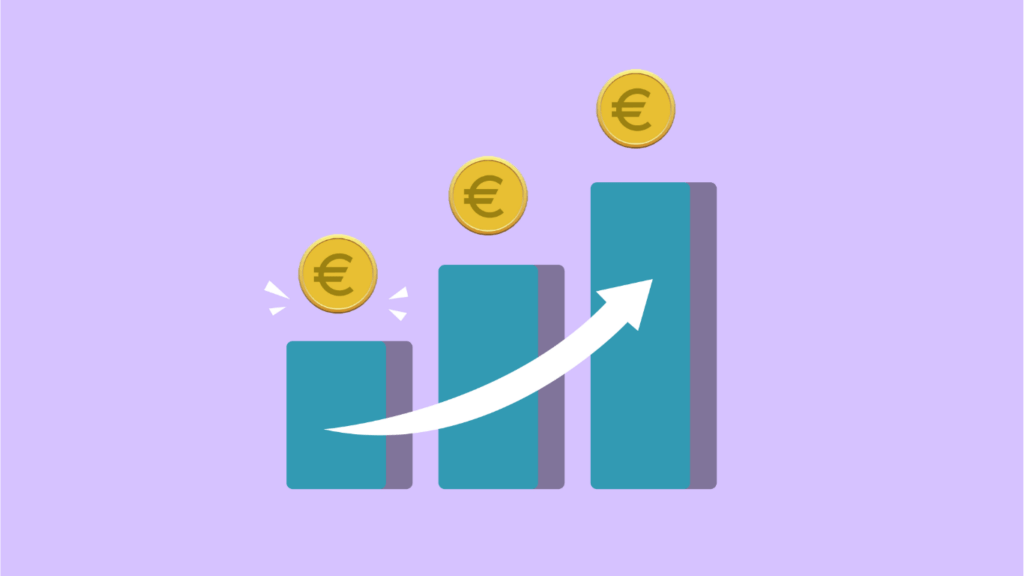As gaming evolves from a hobby to a global business powerhouse, one force behind its rapid growth is clear: data analytics. Today, understanding player behavior, improving game design, and increasing revenue all hinge on how well developers and publishers analyze data. With the rise of online platforms, mobile gaming, and esports, massive amounts of user data are generated daily. Harnessing this data not only enhances user experience but also drives strategic decisions across the gaming industry. From improving monetization to helping studios design logos that resonate with target audiences, data analytics has become indispensable.
Why Data Analytics Matters in Modern Gaming
The gaming industry has become one of the most data-rich environments in the digital economy. Every interaction a player has with a game — from the characters they choose to the duration of gameplay — creates a data point. These insights are gold for developers.
Data analytics helps:
- Understand player engagement and retention
- Improve game mechanics and balance
- Personalize in-game experiences
- Optimize monetization strategies
By analyzing gameplay patterns, developers can identify which parts of a game players enjoy most — or where they tend to quit. For example, if data shows a steep drop-off at level 5, designers can investigate and adjust that section for a better experience.
Data analytics helps gaming companies understand player behavior, personalize gameplay, and enhance game design based on real-time insights.
Enhancing Player Retention Through Behavioral Analysis
Player retention — keeping users engaged over time — is vital for a game’s success. Acquiring users is expensive, so keeping them engaged is cost-effective and profitable. Data analytics plays a critical role here.
By studying session length, frequency, churn rate, and player progression, developers can fine-tune mechanics and pacing. For instance, if analytics show that players log off after failing a specific challenge, developers can tweak the difficulty curve or introduce better rewards to encourage continued play.
Additionally, machine learning models can predict when a player is likely to leave, allowing the game to trigger timely interventions like bonus offers or helpful tips. This proactive approach improves both player satisfaction and lifetime value (LTV).
Behavioral data allows studios to predict churn and adjust game elements to keep players engaged longer.
Personalization and Dynamic Game Content
Data-driven personalization is becoming a staple in modern games. Players expect unique, responsive experiences — and analytics make this possible.
Games like Fortnite and Call of Duty use real-time analytics to offer tailored content such as weapon loadouts, game modes, and character skins. Similarly, mobile puzzle games use algorithms to adjust difficulty dynamically, depending on the player’s skill level. This approach keeps the experience engaging and avoids frustrating difficulty spikes.
Personalized in-game offers and events are also driven by data. If a user frequently purchases cosmetic items, targeted promotions can enhance the likelihood of future purchases.
Personalized gaming experiences powered by analytics keep players engaged by adapting content to their preferences and performance.
Data-Driven Game Design Decisions
Game development today is no longer based on instinct alone. Analytics informs nearly every design decision — from character development and level progression to visual design and user interface.
Even creative elements like how studios design logos or branding assets are influenced by player data. A/B testing different styles, fonts, and colors can reveal what resonates most with players, improving brand appeal and recognition. This is especially crucial in competitive markets like mobile gaming, where visual identity can directly affect downloads and player loyalty.
Furthermore, feedback loops from beta testing allow studios to iterate rapidly. Developers can deploy a feature, track how users interact with it, and either roll it out fully or go back to the drawing board.
Data analytics supports creative choices in game design, including branding and visual elements like logos, through real-time feedback and testing.
Monetization and Revenue Optimization
Freemium and microtransaction models dominate modern gaming. The success of these models depends heavily on understanding player spending habits, which is where data analytics shines.
Through segmentation, developers can identify which player groups are most likely to spend money. For example, “whales” (top spenders) can be offered exclusive content, while “fence-sitters” might receive time-limited discounts to encourage first-time purchases.
Analytics also power ad placement strategies. Knowing when and where to show ads without disrupting gameplay enhances both revenue and player experience.
Data analytics maximizes game revenue by identifying high-value players and optimizing in-game offers and ad placements.
The Role of AI and Predictive Modeling
Artificial Intelligence (AI) and predictive analytics are transforming how studios interpret data. These tools allow developers to forecast trends, automate responses, and simulate game scenarios before going live.
For instance, AI can predict what content a player is likely to engage with, enabling dynamic content delivery. Predictive modeling helps studios plan updates and expansions by forecasting which features will be most successful based on current user behavior.
This shift allows for proactive game design — where updates are driven by anticipated trends rather than reactive feedback alone.
AI and predictive analytics empower developers to anticipate player needs and optimize future updates before launch.
Security, Fair Play, and Fraud Detection
Data analytics isn’t just about fun and profits — it’s also crucial for maintaining trust. Online games are vulnerable to cheating, fraud, and security threats.
By analyzing gameplay patterns and transaction data, studios can detect anomalies indicating cheating or bot activity. Anti-fraud systems use this data to issue warnings, bans, or trigger extra verification steps.
Similarly, analytics can help identify bugs and performance issues, ensuring a smoother experience for all players.
Data analytics safeguards the gaming environment by detecting fraud, ensuring fair play, and improving overall system stability.
Integrating User Feedback and Community Insights
Modern gamers are vocal — they leave reviews, post on forums, and stream gameplay. Mining this data through natural language processing (NLP) helps studios understand sentiment and trends.
For example, if multiple users on Reddit criticize a new update, analytics tools can track the volume and sentiment of these posts. This helps developers respond quickly and appropriately.
Incorporating community feedback strengthens player loyalty and guides better design choices.
Analyzing community feedback gives developers valuable insights into player sentiment, improving responsiveness and trust.
Frequently Asked Questions (FAQ)
What is data analytics in gaming?
Data analytics in gaming refers to the collection, interpretation, and use of player and game-related data to inform design, personalization, and monetization decisions.
Data analytics in gaming is the process of using player data to improve gameplay and business outcomes.
How does data analytics improve player experience?
It helps personalize content, balance gameplay, and predict when players may leave — allowing for timely adjustments to keep users engaged.
Analytics enhances user experience by personalizing and optimizing game interactions based on behavior.
Can analytics influence game design visuals like logos?
Yes, studios often use A/B testing and user feedback to determine which visual elements resonate best with their audience, including how they design logos for branding.
Data helps game studios refine visual branding, including logos, based on user feedback and performance data.
Are AI and analytics the same in gaming?
No. Analytics is about interpreting data, while AI uses that data to make decisions or predictions — though both often work together.
Analytics interprets data; AI uses it to predict or automate game responses.
How do games use analytics for monetization?
By identifying spending habits, optimizing offers, and timing ads, games use analytics to increase revenue without hurting the user experience.
Analytics supports smarter monetization by targeting offers and ads based on user behavior.
Conclusion: Why Data Analytics is the Backbone of Modern Game Development
From design to delivery, every aspect of the gaming industry today is touched by data. Developers use analytics not just to build better games, but to create engaging, dynamic worlds that respond to player behavior. Whether it’s predicting churn, tailoring offers, improving balance, or even helping studios design logos that attract users, data is at the heart of it all.
In a fiercely competitive industry where user experience and monetization must go hand-in-hand, the smart use of analytics is what separates winners from the rest.
Data analytics drives game innovation, user engagement, monetization, and branding — making it essential to every modern gaming strategy.
Discover how data analytics is transforming the gaming industry by enhancing player experience, boosting revenue, and informing design choices.

 Ronald Lemmon is a skilled and dedicated article writer at Spin Win Safely, where his expertise and passion for the online gambling industry are evident in his engaging and informative content. Although he is not the founder or chief editor, Ronald's contributions are essential to the platform's mission of providing comprehensive and reliable information to its readers.
Ronald specializes in crafting detailed reviews of online casinos, game strategies, and industry news, ensuring that Spin Win Safely remains a go-to resource for both novice and experienced gamblers. His ability to simplify complex topics and present them in an accessible and engaging manner has earned him a loyal following among readers who value his clear and concise writing style.
Through his articles, Ronald promotes responsible gaming practices, helping players make informed decisions and enjoy a safer and more enjoyable gambling experience. His dedication to delivering high-quality content and his commitment to the platform's goals make him an invaluable member of the Spin Win Safely team, contributing significantly to the site's reputation as a trusted authority in the online gambling community.
Ronald Lemmon is a skilled and dedicated article writer at Spin Win Safely, where his expertise and passion for the online gambling industry are evident in his engaging and informative content. Although he is not the founder or chief editor, Ronald's contributions are essential to the platform's mission of providing comprehensive and reliable information to its readers.
Ronald specializes in crafting detailed reviews of online casinos, game strategies, and industry news, ensuring that Spin Win Safely remains a go-to resource for both novice and experienced gamblers. His ability to simplify complex topics and present them in an accessible and engaging manner has earned him a loyal following among readers who value his clear and concise writing style.
Through his articles, Ronald promotes responsible gaming practices, helping players make informed decisions and enjoy a safer and more enjoyable gambling experience. His dedication to delivering high-quality content and his commitment to the platform's goals make him an invaluable member of the Spin Win Safely team, contributing significantly to the site's reputation as a trusted authority in the online gambling community.
